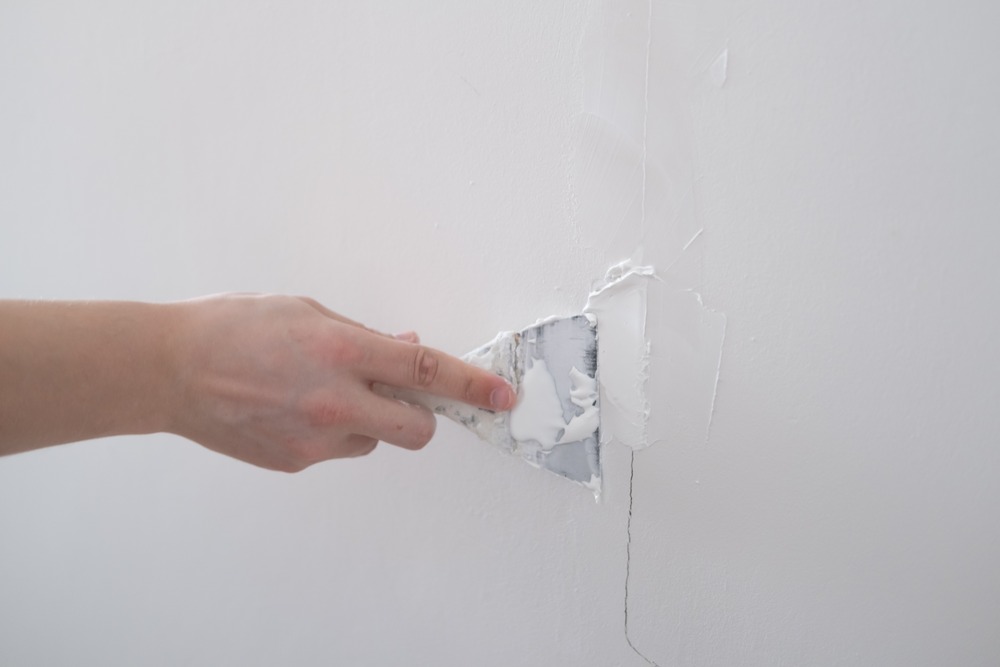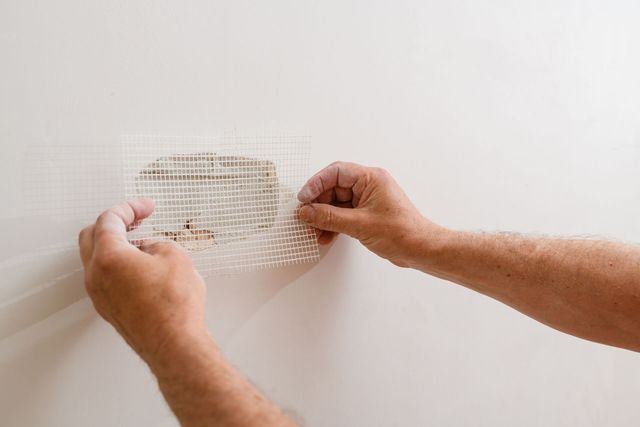Invest in Drywall Repair Ogden UT for long-lasting results and beautiful painted interiors.
A Comprehensive Overview to Mastering Drywall Repair and Installation
This overview supplies a thorough exploration of drywall repair work and installation, catering to both amateurs and skilled specialists. It outlines necessary tools, methods for patching and hanging sheets, and the vital completing procedures. Drywall Installation Ogden Utah. By recognizing common pitfalls, people can achieve sleek outcomes. Grasping these abilities not just enhances one's home but also constructs confidence in DIY undertakings. What foundational pointers will guarantee an effective project throughout?
Vital Devices for Drywall Repair Work and Setup
When starting on drywall repair work and setup, a couple of essential devices can substantially improve the performance and quality of the job. A drywall knife, normally offered in different sizes, is vital for using joint compound and smoothing joints. A taping blade is also necessary for feathering sides and making sure a seamless coating. Additionally, a drywall saw or utility blade enables precise cutting of drywall sheets to fit any area.

Step-by-Step Overview to Patching Holes
Patching openings in drywall is an uncomplicated procedure that can restore the wall surface's look and integrity. To begin, the area around the hole need to be cleansed and any type of loose particles got rid of. For small holes, an easy spackle or joint compound can be applied with a putty knife. Bigger holes may require a spot; an item of drywall can be cut to fit the hole, secured with glue or screws, and after that taped around the sides. Once the spot is in place, joint substance is used over the patch and feathery bent on blend with the bordering wall surface. After the substance dries, fining sand is necessary to accomplish a smooth coating. Lastly, the fixed location can be primed and repainted to match the remainder of the wall. This approach assures a smooth fixing, enhancing the overall look of the drywall and preserving its architectural integrity.
Strategies for Hanging Drywall Sheets
After effectively repairing holes in drywall, the following step involves hanging new drywall sheets to produce a smooth surface. To achieve this, one must begin by determining the wall space accurately and reducing the drywall sheets to fit. It is essential to hang the sheets flat for much better architectural integrity, beginning with the top and functioning downwards.
Utilizing a drywall lift can simplify the process, particularly for ceiling setups. Once placed, securing the sheets with drywall screws at periods of regarding 12 inches along the sides and 16 inches in the field is vital. This assures a solid hold and minimizes the risk of sagging. For edges, the sheets need to be cut to fit snugly, enabling for cleaner seams. It is advisable to startle the joints between sheets to strengthen the total framework, producing a much more resilient finish ready for the following phase in the drywall installment process.
Completing Touches: Taping and Mudding
Completing the drywall setup includes the important steps of mudding and taping, which ensure a smooth and sleek surface. Taping requires the application of joint tape over the joints between drywall sheets. Interior Painting. This tape can be either paper or fiberglass mesh, with each type offering unique advantages. After taping, the next step is mudding, where joint substance, or "mud," is put on cover the tape and fill any imperfections
Utilizing a drywall blade, the substance should be spread out equally, making certain a feathered edge to decrease visible changes. here Multiple layers are often needed, with sanding in between each layer to attain a smooth surface area. Cautious interest during this process is important, as it substantially impacts the last appearance of the wall surface. With the best strategy and persistence, completion result will be a perfect foundation prepared for painting or completing touches.
Common Blunders to Stay Clear Of in Drywall Projects

An additional typical mistake is not permitting sufficient drying time between layers, which can catch dampness and compromise the coating. Neglecting to feather the edges appropriately can develop noticeable lines and blemishes. Avoiding sanding or utilizing incorrect techniques may leave rough areas. By being aware of these pitfalls, individuals can significantly enhance the quality of their drywall tasks and achieve a professional-looking coating.
Regularly Asked Concerns
Can I Fix Drywall Without Professional Aid?
Yes, one can fix drywall without expert help. With the right tools, materials, and advice, people can effectively handle minor repair services. Nevertheless, considerable damage might require professional expertise for suitable outcomes and longevity.
The Length Of Time Does Drywall Substance Require To Dry?
Drywall compound commonly takes in between 24 to 2 days to dry entirely, relying on factors such as humidity and temperature level. Thinner layers might dry out quicker, while thicker applications call for even more time for perfect outcomes.
What's the very best Kind Of Paint for Drywall?
The very best sort of paint for drywall is commonly a water-based latex paint. It supplies superb insurance coverage, resilience, and simplicity of application, making it perfect for interior wall surfaces while permitting very easy clean-up with soap and water.

How Do I Stop Mold on Drywall?
To stop mold on drywall, guarantee proper air flow, control humidity levels, make use of mold-resistant materials, and promptly attend to any kind of leakages. Normal assessments and immediate removal of water damages are additionally necessary for long-lasting avoidance.
Is Drywall Recyclable After Elimination?
Drywall is recyclable after removal, offered it is totally free from pollutants like mold and mildew, paint, or various other dangerous products. Recycling centers can process it into new products, advertising sustainability and minimizing landfill waste in building and construction.
When beginning on drywall repair and installation, a few vital tools can considerably boost the effectiveness and top quality of the job. After successfully repairing openings in drywall, the following action entails hanging new drywall sheets to produce a smooth surface. Finishing the drywall installment entails the crucial steps of mudding and taping, which guarantee a smooth and sleek finish. Accomplishing a sleek finish in drywall jobs can be tough, and numerous usual mistakes can threaten the high quality of the work. Yes, one can repair drywall without expert help.